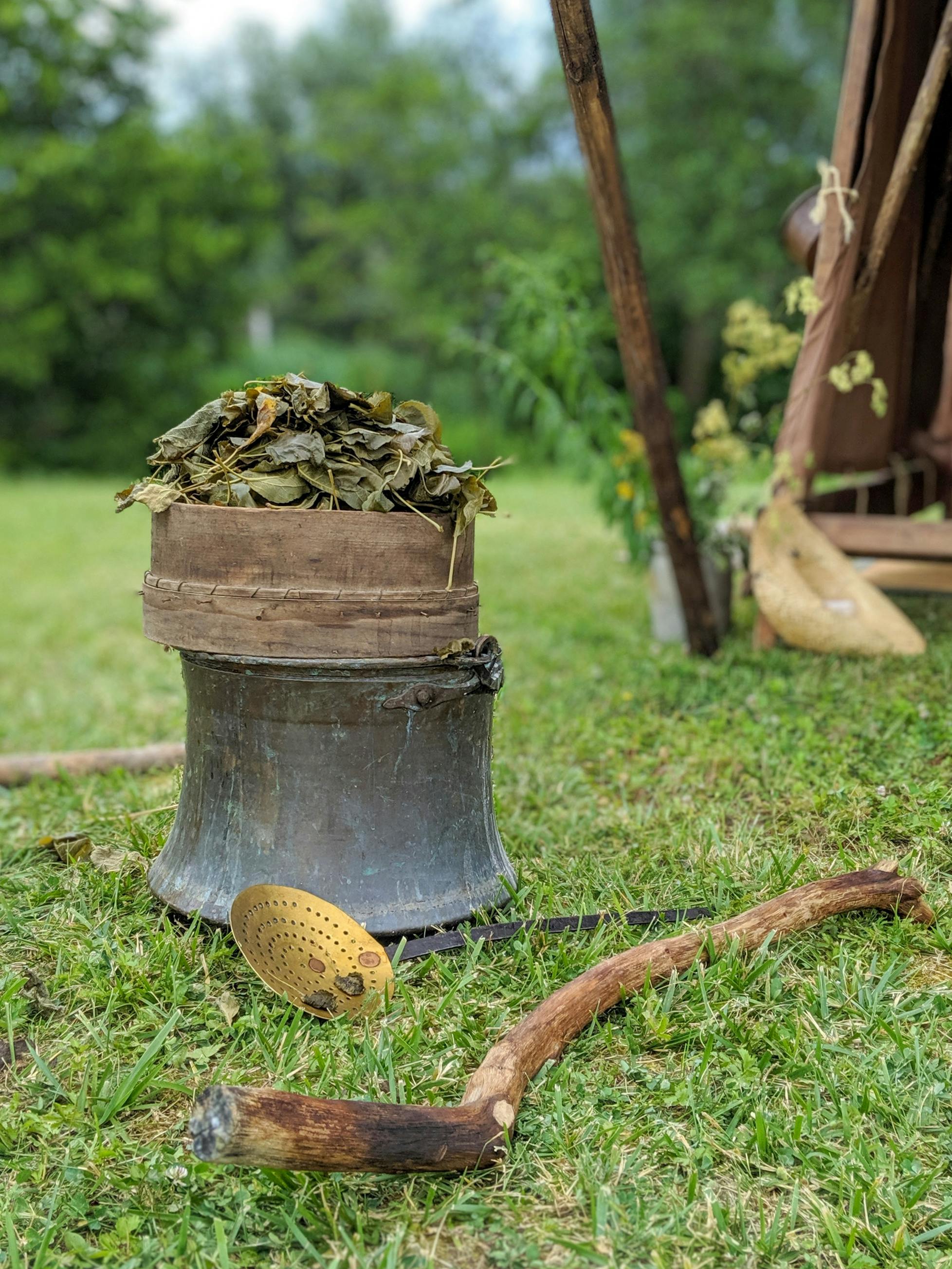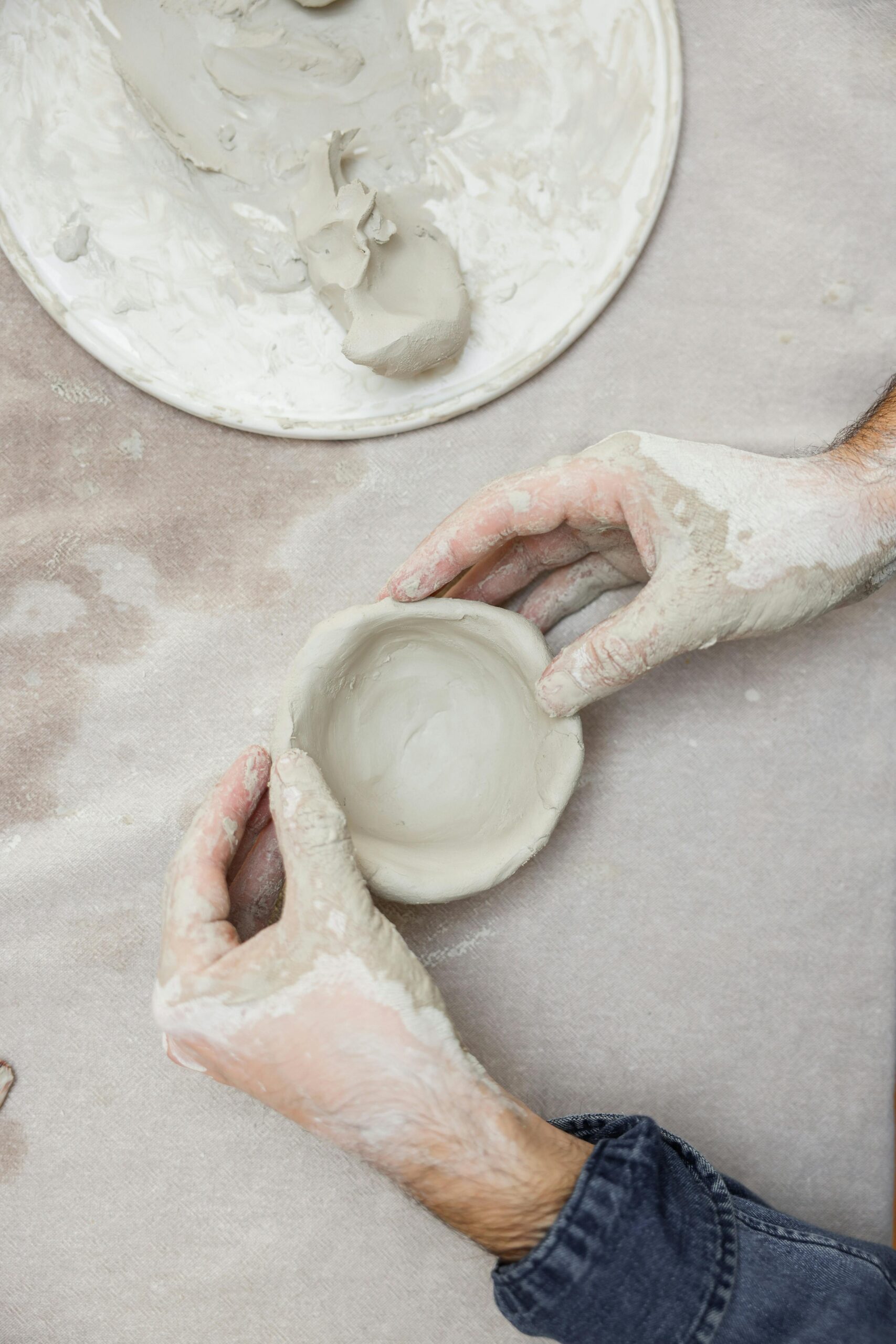Sheffield pottery has captured the hearts of collectors and enthusiasts alike, but have you ever wondered what makes this unique ceramic art so special? Nestled in the heart of Yorkshire, Sheffield pottery boasts a rich history that dates back centuries, making it a fascinating topic for those passionate about British handmade pottery. Many people doesn’t realise the intricate craftsmanship involved in creating these timeless pieces, which combine traditional techniques with modern designs. Are you curious about how Sheffield pottery has evolved over the years to become a sought-after collectible? From exquisite vases to charming tableware, the Sheffield pottery collections showcase an impressive variety that appeals to both casual admirers and serious collectors. Moreover, the recent surge in popularity of eco-friendly pottery has encouraged artisans in Sheffield to innovate with sustainable materials, adding an exciting twist to this age-old craft. What secrets do these beautiful ceramics hold, and why are they trending among interior designers and pottery lovers worldwide? If you’re looking to explore the captivating world of Sheffield ceramics and uncover hidden gems, this introduction will spark your curiosity and guide you through the enchanting realm of pottery that Sheffield proudly offers. Don’t miss out on discovering why Sheffield pottery remains a treasured symbol of British heritage and artistic excellence.
Unveiling Sheffield Pottery Secrets: How Handmade Ceramics Are Revolutionising British Craftsmanship

Sheffield pottery has been a thing for ages, and honestly, its charm just don’t seem to fade away. If you ever stumble upon a Sheffield pottery pieces for collectors, you might be scratching your head wondering why people are so obsessed with it. Well, maybe it’s just me, but I feel like there’s something special about these old ceramics that you just can’t find in modern stuff. The craftsmanship, the stories behind them, or maybe just the fact that they ain’t mass produced anymore?
So what exactly is Sheffield pottery? It’s basically pottery that was made in Sheffield, a city known more for its steel than ceramics, but that didn’t stop local artisans from making some beautiful pottery work. Sheffield pottery includes everything from vases to plates and even ornamental items. You might think it’s all dusty old junk, but nope! Some of these pieces are highly sought after by collectors and antique dealers. Here’s a quick overview about Sheffield pottery that might help you get a grip on this topic:
| Type of Sheffield Pottery | Description | Approximate Age | Popularity Level |
|---|---|---|---|
| Slipware | Pottery decorated with slip, a liquid clay mixture | 18th to 19th century | High |
| Porcelain | Fine, white, and often translucent pottery | 19th century | Medium |
| Earthenware | Coarser pottery, usually glazed | 17th to 18th century | Low |
Not really sure why this matters, but the slipware from Sheffield is particularly famous because of its colourful patterns and traditional techniques. The locals used to decorate their pots with a slip that often had an earthy colour, making it look quite rustic and homey. You know, nothing too fancy but enough to catch your eye on a dusty shelf at a market.
If you ever try to hunt down antique Sheffield pottery, you’ll find there are different marks and stamps on the base that help identify where and when the piece was made. These marks can be a bit confusing, though, because sometimes they’re faint or worn off due to age. So, if you’re buying one of these pieces, better have a good eye or maybe a friend who knows their stuff, because you don’t want to get ripped off with a fake or a modern copy.
Here’s a little list I put together to help you spot genuine Sheffield pottery:
- Look for uneven glaze or brush strokes; modern stuff is usually too perfect.
- Check the base for makers’ marks or any inscriptions.
- Notice the weight – older pottery tends to be heavier than similar modern pieces.
- The colour scheme should be muted or earthy, not neon or too bright.
- Ask the seller for any history or provenance if possible.
One thing that often gets overlooked is the way Sheffield pottery was used in everyday life. These weren’t just decorative pieces; they were functional. People used them for cooking, serving, and storage. So if you find a chipped jug or a cracked teapot, it’s probably been through a lot. Maybe it was the centrepiece of many a family meal, or just sat in a kitchen collecting dust for decades.
Here’s a quick comparison table showing some Sheffield pottery uses and their typical conditions today:
| Pottery Item | Original Use | Condition Likely Found | Value Estimate (£) |
|---|---|---|---|
| Serving Bowls | Food serving | Often chipped | 20-50 |
| Decorative Vases | Ornamentation | Usually intact | 40-100 |
| Cooking Pots | Cooking stews, soups | Usually cracked | 15-30 |
| Jugs and Pitchers | Pouring liquids | Sometimes stained | 30-70 |
Honestly, sometimes I wonder why anyone bother collecting old Sheffield pottery when there’s so many new designs out there. But I guess that’s part of the appeal – owning a piece of history, something that has a story, something that you can’t just find on the high street. Also, Sheffield pottery has this quirky charm that’s hard to describe. It’s imperfect, a bit rough around the edges, just like the city itself.
If you want to get into collecting Sheffield pottery, it’s not just about buying random items. You should maybe learn a bit about the history behind it. For example, during the Industrial Revolution, Sheffield’s potters had to compete with mass-produced ceramics from other parts of England, so their styles and techniques changed quite a bit over time. This means you can actually trace the period a piece came from if you know what to look for.
So, here’s some practical tips for newbies looking to start a collection of vintage Sheffield pottery:
- Start small – buy affordable pieces
7 Stunning Sheffield Pottery Pieces You Didn’t Know Existed – A Collector’s Guide

Sheffield pottery: a world of clay, tradition and quirks
When you think about Sheffield, what pops into your head? Steel? Football? Maybe the odd rainy day? But there’s a whole other side to this northern city that don’t often gets the spotlight — Sheffield pottery and ceramics history. Not really sure why this matters, but it’s fascinating how a place known for its blades also carved a niche in pottery. Let’s dig into this lesser-known craft, with all its ups and downs, spills and cracks.
A brief history of Sheffield pottery
You might think pottery is all about sunny, rural villages in the south, but Sheffield’s got its own story. Since the 18th century, potteries in Sheffield begun to flourish, blending industrial innovation with traditional handcrafts. The Sheffield pottery industry timeline shows how these makers adapted through wars, economic dips and changing tastes. They made everything from simple earthenware to ornate porcelain, but with a bit Sheffield grit thrown in.
| Era | Key Developments | Notable Pottery Types |
|---|---|---|
| 1700s – 1800s | Early workshops and kilns built | Earthenware, slipware |
| Late 1800s | Industrialisation boosts output | Transfer-printed ceramics |
| 1900s | Art pottery movement influence | Art Nouveau, Art Deco designs |
| 2000s onward | Revival of handmade craftsmanship | Studio pottery, bespoke pieces |
I swear some of these styles looks like they had a bit too much fun with the glazes. Or maybe it’s just me, but I feel like some Sheffield potters didn’t really care about staying inside the lines — and that’s the charm!
What makes Sheffield pottery styles unique?
You got to understand, Sheffield pottery isn’t just your typical clay and paint job. The city’s industrial background means their pottery often has a robust, no-nonsense feel. The colours can be bold, sometimes clashing in ways that make you wonder if the potter was having a bad day or just thought “sod it, let’s go wild”. These pieces tend to be practical as much as pretty — mugs that can take a battering, plates for a proper Sunday roast, and teapots that don’t spill all over your lap.
Here’s a quick rundown of some Sheffield pottery characteristics you might notice:
- Thick walls and sturdy bases (because tea time is serious business)
- Use of local clays giving an earthy tone to the ceramics
- Decorative motifs often inspired by Sheffield’s industrial heritage
- Glazing that ranges from matt to high gloss, sometimes within the same piece
- Occasional quirky imperfections that actually add character
Now, if you’re a collector or just curious, the Sheffield pottery marks and signatures guide might be your best mate. These little stamps or painted marks can tell you who made the piece, when, and sometimes even what kiln was used. Not always easy to find, mind you — some potters were secretive as heck.
Where to find authentic Sheffield pottery?
If you’re looking to snag some genuine Sheffield pottery, your best bets are the local markets, specialised antique shops, or even some galleries around the city. The best places to buy Sheffield pottery would include:
- Kelham Island Antique Market — a treasure trove, if you don’t mind digging through a bit of clutter.
- Sheffield Vintage Emporium — a spot for curated finds with some provenance.
- Artisan fairs and pottery studios — where you get to meet the makers, which is always a bonus.
Just a heads up: prices can vary wildly. Sometimes you’ll find a bargain that looks like it’s been abandoned in a dusty corner, other times you might pay a small fortune for a piece that’s barely out the kiln. Not really sure why some potteries become so pricey, but hey, supply and demand, I suppose?
Tips for caring your Sheffield pottery
If you finally got your hands on some of this lovely stuff, take care of it, yeah? Pottery might looks tough, but it can be surprisingly delicate. Here’s a quick care sheet for your Sheffield pottery collection:
| Care Aspect | Do’s | Don’ts |
|---|---|---|
| Cleaning | Use mild soap and warm water | Avoid harsh detergents or scrubbing pads |
| Storage | Keep away from extreme temperature | Don’t stack heavy objects on top |
| Handling | Support the base when moving | Don’t hold by handles only (they break easily) |
| Display | Use padded stands or soft cloth bases | Avoid direct sunlight for long periods |
Honestly, if you treat these pieces well, they’ll last for generations. Or at least
Why Sheffield Pottery Handmade Ceramics Are the Must-Have Home Décor Trend of 2024
Sheffield pottery: A Quirky Dive into the World of Clay and Craft
If you ever been to Sheffield or heard about its culture, you might of come across something called Sheffield pottery. Now, I’m not really sure why this matters, but ceramic lovers and history buffs seem to be quite obsessed with it. Sheffield, known for its steel and cutlery, also has this charming little niche in pottery that’s been going on for centuries. Weird, right? Steel and clay don’t really sound like best mates, but there you go.
The origins of Sheffield pottery dates back to the 18th century, when potters started crafting everyday items like jugs, plates, and teapots. It wasn’t no fancy stuff, but more practical, durable ware that could survive the rough and tumble of industrial life. Maybe it’s just me, but I feel like there’s something romantic about handmade pottery from a gritty industrial town. The rough edges and little imperfections give it a soul or something.
Some key facts about Sheffield pottery history you might want to know:
| Year | Event |
|---|---|
| 1700s | Pottery production began in Sheffield area |
| 1800s | Rise of utilitarian pottery for industrial homes |
| Early 1900s | Introduction of decorative styles and glazes |
| 1950s | Decline due to mass-produced ceramics |
| 2000s+ | Revival of artisan pottery in Sheffield |
It’s interesting to see how the pottery scene in Sheffield has evolved. From functional stuff to decorative pieces, the makers tried to keep up with the times, even if sometimes they fell behind. The 1950s was a bit of a downer for Sheffield pottery collectors since the cheap, mass-produced ceramics flooded the market.
Now, when people talks about Sheffield pottery styles, they often mention a few distinctive features. The clay used was local, giving the ceramics a unique colour and texture. Also, many pieces featured simple, rustic designs, sometimes with hand-painted motifs like flowers or geometric shapes. These weren’t the glossy, perfect ceramics you’d find in posh galleries, but something more… authentic, I guess.
Here’s a quick rundown of popular Sheffield pottery styles:
- Rustic utilitarian ware: Big mugs, plates, and bowls made for everyday use.
- Floral hand-painted ceramics: Often with blue or green motifs.
- Salt-glazed pieces: That slightly rough, shiny finish you can’t forget.
- Art deco influences: A rare but notable trend in the early 20th century.
Finding genuine antique Sheffield pottery can be a bit of a treasure hunt. Many pieces got lost over time or mistaken for pottery from other regions. Plus, the marks or stamps on Sheffield pottery aren’t always clear or consistent. So, if you’re thinking about starting a collection, be prepared for some detective work.
Not really sure why this matters, but apparently, there’s a small community of collectors and makers in Sheffield who still cherish this craft. Workshops, local markets, and even small museums sometimes showcase these ceramics. It’s like a little secret club for pottery nerds. And honestly, the best way to appreciate Sheffield pottery craftsmanship is by holding a piece in your hand and feeling its weight and texture.
Below is a comparison table between Sheffield pottery and other famous English pottery styles:
| Feature | Sheffield Pottery | Staffordshire Pottery | Wedgwood Pottery |
|---|---|---|---|
| Origin | Sheffield, Yorkshire | Staffordshire | Staffordshire |
| Primary use | Utilitarian and decorative | Mostly decorative | Fine tableware and art |
| Clay type | Local Sheffield clay | Red or white clay | Fine white clay |
| Design style | Rustic, hand-painted | Ornate, colourful | Neoclassical, refined |
| Collectability | Niche, regional | Highly collectible | Highly collectible |
One thing that puzzles me is why Sheffield pottery designs don’t get more love outside of Yorkshire. Maybe it’s because Sheffield never quite made a splash like Stoke-on-Trent, the pottery capital of England. Or maybe people just prefer their ceramics to be fancy and perfect, which Sheffield pottery definitely isn’t. It’s rough around the edges, literally and figuratively.
If you’re curious about trying your hand at pottery in Sheffield, there’s no shortage of places offering classes. You could learn how to make your own bowl or mug, and maybe even create something inspired by traditional Sheffield styles. Most of these workshops welcome beginners, so don’t worry if you’re all thumbs. Plus, it’s a fun way to get dirty and forget about your phone for a while.
Here’s a simple guide on where
Discover the Timeless Art of Sheffield Pottery: Unique Techniques Behind Handmade Ceramics
Sheffield pottery has always been a bit of a mystery to me, and maybe you feels the same? It’s like this quirky little corner of British history that doesn’t get the shout out it probably deserves. Now, if you’re not familiar, Sheffield pottery history and collections involves a lot more than just your average ceramic bits and bobs. These pieces have stories that twist and turn like a soap opera, but with less drama and more clay.
To start with, the city of Sheffield, known mostly for its steel, surprisingly had a decent pottery scene going on. Not really sure why this matters, but if you dig into the archives, you’ll find that Sheffield pottery manufacturers from the 19th century were trying hard to make a mark against the big names like Staffordshire. They didn’t always succeed, mind you, but some of their wares ended up being quite collectable these days. Probably because they had this rough-around-the-edges charm that folks today find endearing, or maybe it’s just me.
A quick glance at some typical Sheffield pottery pieces:
| Item Type | Description | Approximate Date | Notable Feature |
|---|---|---|---|
| Decorative plates | Often hand-painted with floral patterns | 1850-1900 | Slightly uneven glaze |
| Teapots | Heavy, robust design with metallic glazes | 1880-1920 | Sometimes cracked (adds charm) |
| Figurines | Mostly animals and mythological creatures | 1900-1930 | Quirky shapes, sometimes odd |
What really surprises me is how these pieces are still popping up in antique shops around Sheffield and even online. People hunting for authentic Sheffield pottery antiques usually get a bit giddy when they find something genuinely old. But beware, not all pottery branded “Sheffield” is the real deal. Lots of fakes or just mass-produced stuff that ain’t got much soul.
Talking about styles, Sheffield pottery often had this rustic look, sort of like it was made by someone who just learnt pottery yesterday. The imperfections are what makes it special though, don’t you think? It’s not glossy, plastic-looking stuff but something you could imagine your grandma using. Or maybe your eccentric uncle, who collects weird teapots and talks to them like they’re old friends. Yeah, that guy.
Here’s a list of must-know facts if you’re interested in collecting or just curious about Sheffield pottery designs and makers:
- Most pieces were utilitarian but decorated with floral or geometric motifs.
- Metallic glazes were a thing, which sometimes look like they’ve been through a nuclear accident.
- The clay used was local, which gave the pottery a unique texture.
- Marks on the bottom are rare, making identification tricky.
- Some potteries switched to making steel kitchenware during the wars—bit of a plot twist there.
Now, if you want to get your hands on some of this Sheffield pottery, you might wanna check out local fairs, auction houses, and online markets. But be careful, because prices can be all over the shop. A simple cup might go for a fiver, or it could be a couple hundred quid if it’s something rare. Not really sure why this matters, but knowing the difference between a genuine Sheffield piece and a knockoff could save you a small fortune—or just a lot of disappointment.
One of the more fascinating bits about collecting Sheffield pottery items online is the community around it. There’s a bunch of enthusiastic folks who share photos, swap stories, and even argue about what counts as “real” Sheffield pottery. Honestly, it’s like a soap opera but with ceramics. And the debates can get heated, especially when someone tries to pass off a dodgy reproduction.
If you’re thinking about starting your own collection, here’s a quick cheat sheet for spotting Sheffield pottery:
| Feature | What to Look For | Why It Matters |
|---|---|---|
| Weight | Heavier than usual pottery | Indicates the robust manufacturing |
| Glaze | Metallic or slightly uneven | Typical of Sheffield style |
| Pattern | Floral, geometric, or rustic | Common decoration motifs |
| Markings | Usually none or faint, sometimes a symbol | Hard to identify but helps |
| Condition | Cracks or chips might add to the charm | Shows age and authenticity |
Maybe it’s just me, but I feel like there’s something magical about owning something that’s been used and loved for over a century. Sheffield pottery isn’t just about the object itself; it’s about the story it carries. Every scratch or chip a reminder of past lives, past cups of tea drunk, and past hands that shaped it.
If you ever visit
How to Identify Authentic Sheffield Pottery: Expert Tips for Collectors and Enthusiasts
Sheffield pottery: A Quirky Dive Into The World Of Clay And Craft
If you ever find yourself wandering through the streets of Sheffield, you might stumble upon some charming little shops selling Sheffield pottery pieces that look like they came from another time. Now, I’m not really sure why this matters, but there’s something oddly satisfying about holding a mug or a vase made in this Northern city. Maybe it’s just me, but I feel like Sheffield pottery has this raw, authentic vibe that mass-produced stuff just can’t match.
A Brief History (Or At Least What I Could Google)
Sheffield’s pottery scene started picking up in the 18th century when lots of potteries popped up around the city. They mostly made everyday items like plates, jugs, and bowls, but some of the designs got pretty fancy over the years. What surprises me is how these traditional Sheffield pottery styles have survived the test of time, despite all the changes in industry and technology. I guess when you’re good at something, people keep buying your stuff… or maybe it was just that no one wanted to throw away their gran’s old mugs.
The Styles You Might See (Or Not, If You Blink)
| Style Name | Description | Common Use | Era |
|---|---|---|---|
| Slipware | Pottery decorated with slip (liquid clay) | Plates, jugs, decorative pots | 18th-19th century |
| Ironstone | Heavy-duty, dense pottery | Everyday crockery | 19th century |
| Studio Pottery | Handmade, often unique pieces | Artistic vases, bowls | Mid 20th century onwards |
Slipware is probably the one you see the most if you go hunting around flea markets or antique shops in Sheffield. It’s colourful and a bit messy, which makes it kinda charming. Ironstone, on the other hand, feels like it could survive a fall from the kitchen counter without breaking — perfect for clumsy people like me.
The Studio Pottery movement in Sheffield is a whole different beast. These are the pieces where you can really see the artist’s hand, sometimes with weird shapes or glazes that don’t quite look like pottery should. Not sure if it’s “art” or a “pottery fail” half the time, but it’s definitely interesting to look at.
Why Sheffield Pottery Still Matters (Or Why Some People Think So)
You might be asking, why should anyone care about authentic Sheffield pottery craftsmanship in the age of Amazon and IKEA? Well, for starters, it’s got history and character. When you buy a piece of Sheffield pottery, you’re not just paying for a mug or a bowl; you’re buying a little piece of the city’s soul. Or at least, that’s the story they tell you in the gift shops.
There’s also the environmental side of things. Handmade pottery usually has a smaller carbon footprint compared to mass-produced ceramics. Plus, these pieces tend to last longer, if you look after them properly — so you’re not chucking out a cracked mug every couple of months. Not that I’m perfect at this, I have a cupboard full of chipped ceramics I keep for “sentimental reasons.”
Where To Find The Best Sheffield Pottery
If you’re serious about diving into the world of Sheffield pottery, here’s a quick list of places and tips to help you find some gems:
- Local markets: Sheffield’s markets often have stalls selling vintage and handmade pottery. It’s a bit hit-and-miss, but sometimes you get lucky.
- Pottery studios: Visiting a working pottery studio can give you insight into how these pieces are made and maybe even let you have a go at the wheel (spoiler: it’s harder than it looks).
- Antique shops: Good for older, more collectible pieces. Expect to pay a bit more, but you might find something unique.
- Online forums and groups: Believe it or not, there are Sheffield pottery fan clubs online where people swap tips, sell pieces, and share history.
Practical Insights For Beginners
If you’re thinking of starting a collection or even trying your hand at making some pottery yourself, here’s a little cheat sheet:
| Tip | Why It Matters |
|---|---|
| Handle with care | Sheffield pottery can be fragile, especially older pieces |
| Learn about glazes | Some glazes contain materials not safe for food use |
| Check for maker’s marks | Can help you identify the age and origin |
| Ask about firing methods | Different firing temps affect durability |
Honestly, the maker’s marks can be a bit confusing. Sometimes they’re stamped, sometimes written, and other times just a mysterious scratch that looks like it was done by a toddler.
Conclusion
In conclusion, Sheffield pottery holds a distinctive place in the rich tapestry of British ceramics, renowned for its exceptional craftsmanship, innovative designs, and enduring cultural significance. From its humble beginnings in the industrial heartland to becoming a celebrated name among collectors and enthusiasts, Sheffield pottery reflects both the artistic heritage and industrial prowess of the region. The fusion of traditional techniques with contemporary artistry ensures that these pieces remain timeless, appealing to both history lovers and modern decorators alike. Whether you are a seasoned collector or simply appreciate fine pottery, exploring Sheffield’s ceramic legacy offers a fascinating glimpse into the evolution of British craftsmanship. For those inspired by this unique blend of history and artistry, seeking out Sheffield pottery—whether through local galleries, auctions, or specialised retailers—can be a rewarding way to connect with a cherished part of Britain’s creative heritage. Embrace the charm of Sheffield pottery and add a touch of authentic British artistry to your collection today.
































